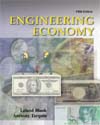The present worth method of comparing alternatives involves converting all cash flows to present dollars at the MARR. The alternative with the numerically larger (or largest) PW value is selected. When the alternatives have different lives, the comparison must be made for different service periods. This is done by performing the comparison over either the LCM of lives or a specific study period. Both approaches compare alternatives in accordance with the equal-service requirement. When a study period is used, any remaining value in an alternative is recognized through the estimated future market value. Life-cycle cost analysis is an extension of PW analysis performed for systems that have relatively long lives and a large percentage of their lifetime costs in the form of operating expenses. If the life of the alternatives is considered to be infinite, capitalized cost is the comparison method. The CC value is calculated as A/i, because the P/A factor reduces to 1/i in the limit of n=∞. Payback analysis estimates the number of years necessary to recover the initial investment plus a stated rate of return (MARR). This is a supplemental analysis technique used primarily for initial screening of proposed projects prior to a full economic evaluation by PW or some other method. The technique has some drawbacks, especially for no-return payback analysis, where i = 0% is used as the MARR. Finally, we learn about bonds. Present worth analysis determines if the MARR will be obtained over the life of a bond, given specific values for the bond's face value, term, and interest rate. | 


 2002 McGraw-Hill Higher Education
2002 McGraw-Hill Higher Education